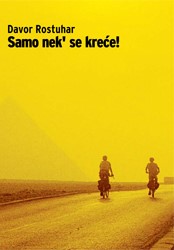
Dissemination
Just let it move - Methodology
Written by Super UserTitle of Activity
Culture collisions
Description of educational activity
Duration: 2 x 45 minutes
Student age: 18 – 19 (senior year)
Student class organization: group work
Lecture goal:
Shaping their own attitudes, explaining and proving them
empathy development
Supporting materials
- Internet
- Class leaflet
Highlights:
- 4 texts
- sticky notes
Activity:
reading, interpreting, and discussing the text
-
Activity before reading
Provides motivation, allows students to share their own experiences/opinions, group cohesion
-
The students are divided into groups of four. Each group gets one task.
Introductory text
INTRO (str. 5 – 8)
After common reading of the introductory text the students work in groups:
-
Outline 3 thoughts from the text that are stimulating and explain why.
-
Mention your childhood dreams and choose the ones that are achievable in the future.
-
Apply the sentence in the context of personal challenges: In the past, the whole world was explored; the highest mountains were concurred and the farthest points were visited. I knew I wasn’t doing something new, but for me, it was the start of discovering the world.
-
Presentation of group results and short discussion.
II. Activities during and after reading in group.
- The groups receive parts of the story and teaching leaflets (each group reads one part)
a) Syria: Driving along the Euphrates (page 63 - 64)
Basic task: Describe the writers travel concerns and state the reasons. Explain how to reconcile their cultural heritage and cultural orientations of the new environment. Explain the possibility of intercultural understanding.
Analysis: male-female relations; gender equality; cultural differences; intercultural
b) Syria: In Bedouin tents (page 75 - 76)
Basic task: Explain who the Bedouins are, how and what affects their nomadic way of life. Compare Bedouin's hospitality and their weak sense of ownership with Western culture.
Analysis: the impact of natural environment on people's lives; cultural differences
c) Israel: For Peace! (pp. 162-164)
Basic task: Describe the life of refugees. Explain their sense of helplessness sense of never getting a break.
Analysis: refugee status; meaninglessness of the war; (no) possibility of change
III. Common activities after reading.
Presenting group work results.
Discussion: Be an observer or participant. Actualization of issues and updates
Evaluation and Assessment Method:
Teacher Role - Prepare Materials and act as a Moderator
Evaluation of work in groups - questionnaire: evaluation and self-evaluation
Students are assessed on the basis of their abilities:
· Reading with understanding and shaping their own opinions and arguments
· Participation in a argumented discussion
· presentation of group work - systematic and structured presentation
The Impact of Activity on Reading RSP:
Activities encourage intercultural understanding and development of students' empathy.
Connection to curriculum
Class: Senior year
Curriculum:
Language Expression - Discussion
History
Geography
Ethics
Knowledge:
- better understanding of yourself and the world around you
- Critical thinking about the world, society, religion
- Enjoyable reading experience
Skills:
- collection, selection and evaluation of information
- reading, interpreting and evaluating literary texts
Competence:
- communication competences
- intercultural competences
- ability to work in a team, and acceptance of someone different
Bibliographic reference to be used during the activity
Davor Rostuhar: Just Let it Move!
Publisher: Klub za ekpedicionizam i kulturu
2003., 2006., 2009.
256 pg.; 154 photographs
Soft cover
ISBN 953-99434-0-X

Results
Expected outcomes:
Students will be able to:
- clearly shape their attitudes and arguments
- actively listen to others
- use and accept etiquette communication
Recommendations
The work is appropriate thematically and is content targeted to group of readers. It also motivates to select other works by the same author or similar works of another author.
Contact
X gimnazija ''Ivan Supek''
Ul. Vjekoslava Klaića 7
10000
Zagreb
E-mail: partners@handbook4rspreaders.org











